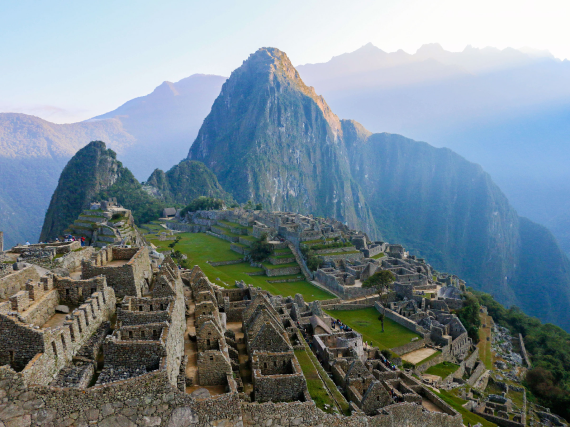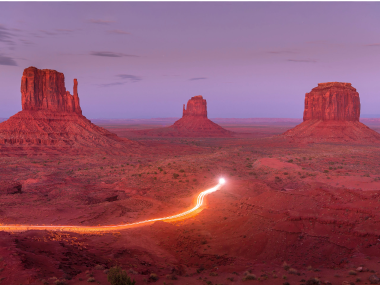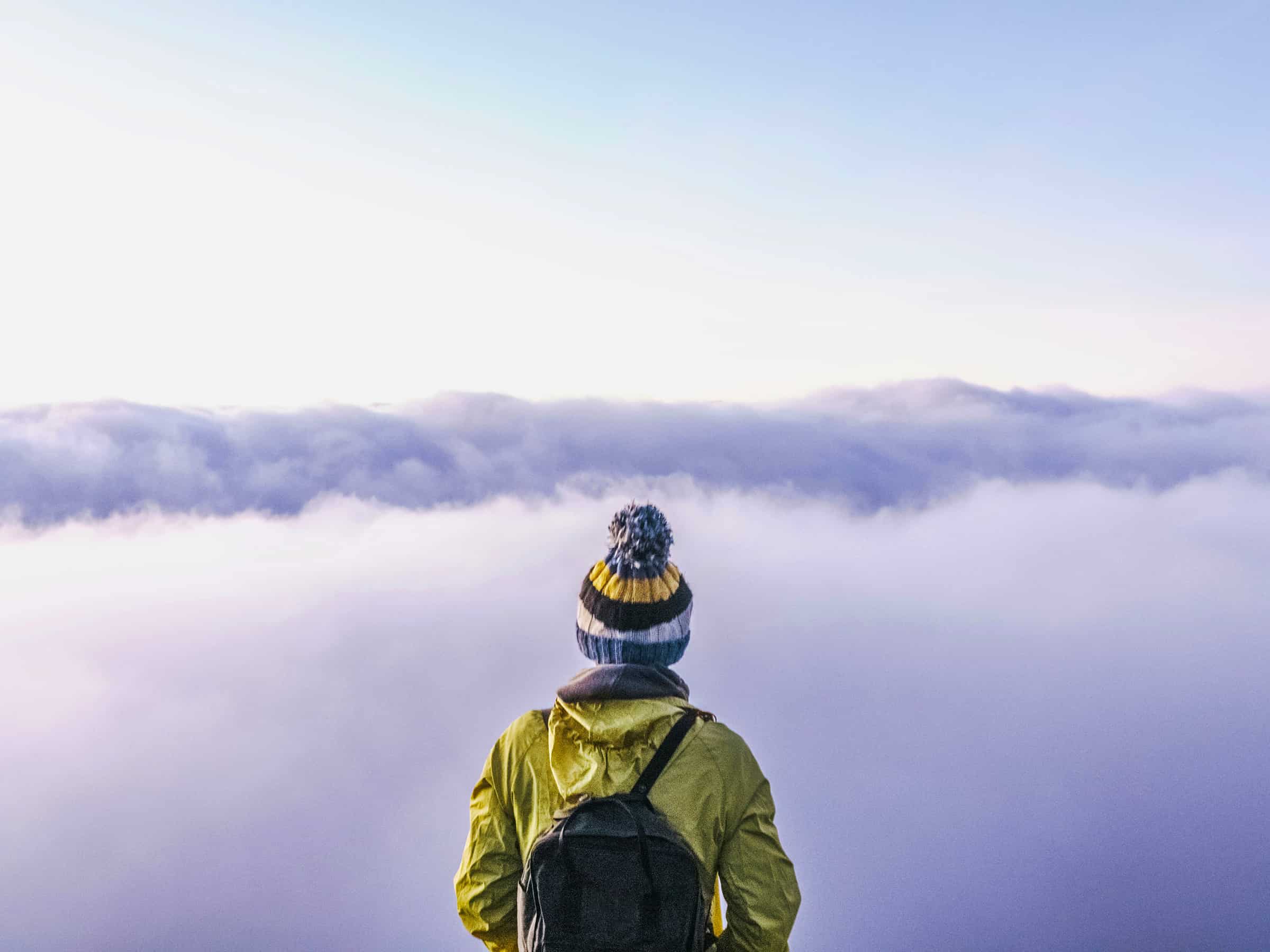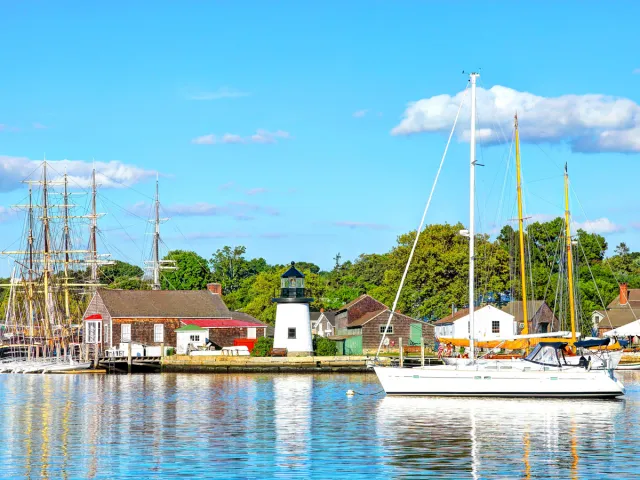Building a dam leads to the creation of enormous artificial lakes known as reservoirs. They are used to store water later used to supply households and businesses, as well as for collecting water that generates hydroelectricity. Moreover, many of these bodies of water have become popular recreation areas for outdoor activities such as boating and fishing, too, making them appealing destinations for travelers. From California to the Dakotas, here are the five largest reservoirs in America, based on their capacity measured by acre-feet.
5. Fort Peck Lake – Montana

Capacity: 18.7 million acre-feet
Fort Peck Lake is Montana’s largest body of water and the fifth-largest reservoir in the United States. It stretches for over 130 miles and has a 1,520-mile-long shoreline, which is longer than the entirety of California’s coastline.
The reservoir was created in the 1930s, when the nearly 4-mile-long Fort Peck Dam was built across the Missouri River. The dam is the largest hydraulically-filled dam in the U.S., and its five turbines can generate 185,250 kilowatts of power. Guided tours retrace the dam’s construction and visit its power plants.
Bordering the lake is the Charles M. Russell National Wildlife Refuge, offering over a million acres of recreational area for birding, camping, fishing, and hiking. An impressive 50 species of fish, such as chinook salmon, trout, and walleye, inhabit the lake. Boat owners can launch into the placid waters from ramps located at all of the lake’s marinas.
4. Lake Oahe – North Dakota and South Dakota
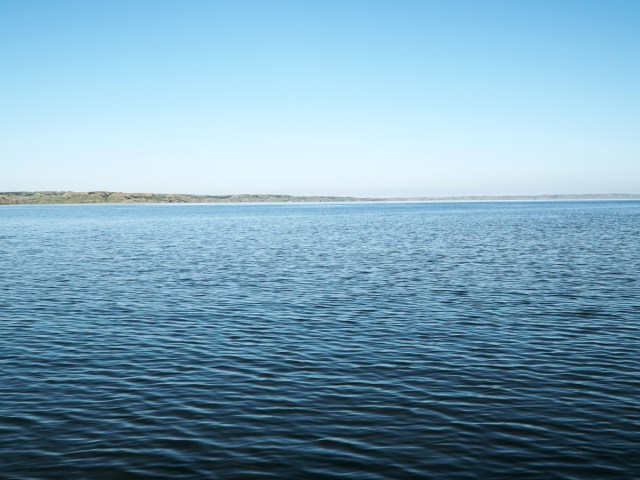
Capacity: 23.5 million acre-feet
Measuring 230 miles long, Lake Oahe is the fourth-largest reservoir by volume in the United States. Framed by sprawling prairie grassland, the body of water connects Pierre, South Dakota, to Bismarck, North Dakota.
Lake Oahe was formed by the Oahe Dam, which stops the flow of the Missouri River about 8 miles north of Pierre. It is one of the largest earth-rolled dams on the planet (made of layers of compacted rock) and provides electricity to many Midwestern states. Adjacent to the dam, the Lake Oahe Visitor Center has exhibits about the construction of the dam and the region’s natural history.
There are over 50 recreational areas around the shores of the reservoir. Popular activities on the reservoir include kayaking, paddleboarding, tubing, and waterskiing. Wildlife lovers can also spot bald eagles, while anglers come hoping to catch catfish, pike, and salmon. And history buffs can visit nearby historical forts and the gravesite of legendary Lakota Sioux leader Sitting Bull.
3. Lake Sakakawea – North Dakota
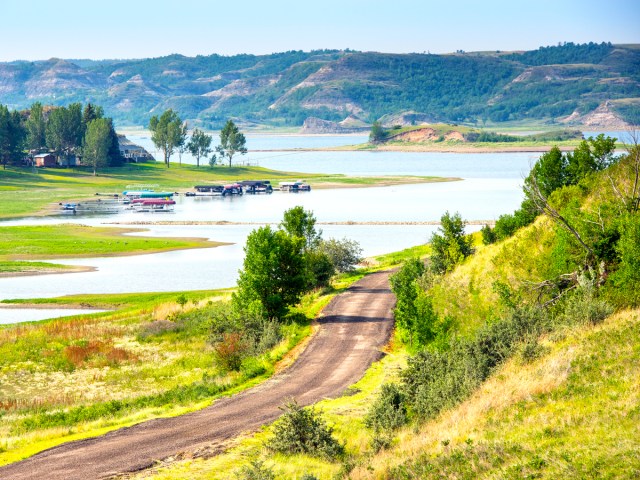
Capacity: 23.8 million acre-feet
Lake Sakakawea is surrounded by the Badlands of western North Dakota, about 75 miles north of Lake Oahe along the Missouri River. This vast body of water is 178 miles in length and reaches depths of 175 feet.
The name Sakakawea comes from the young Shoshone-Hidatsa woman who helped Lewis and Clark explore the Louisiana Territory. The reservoir was created following the completion of the Garrison Dam by the Army Corps of Engineers in 1956. Controversy surrounded the dam project because the newly-formed reservoir forced members of the Fort Berthold Indian Reservation from their villages.
Today, Lake Sakakawea is both a vital source of hydroelectric power and a popular recreational destination. Its 1,500-mile-long shoreline provides dozens of easy access points for boats — making it a favored location for camping, fishing, and swimming. It’s also flanked by several state parks and wildlife management areas, including the Audubon National Wildlife Refuge and Lake Sakakawea State Park.
2. Lake Powell – Arizona and Utah

Capacity: 25.2 million acre-feet
The second-largest reservoir in the United States straddles the border of Utah and Arizona. Part of the Colorado River, Lake Powell has a storage capacity of over 25 million acre-feet, stretches 186 miles long, and has over 2,000 miles of shoreline.
It was formed in 1963, after the completion of the Glen Canyon Dam and took 17 years to reach full pool (normal water level). Glen Canyon Dam is a 710-foot-tall, concrete arch-gravity dam — a type of dam which is curved upstream and directs water pressure against the surrounding rock walls — and was built to provide water storage and hydroelectric power to southwestern states.
In addition to creating the reservoir, the construction of the dam paved the way for the Glen Canyon National Recreation Area. The area’s 1.25 million acres of land are famous for surreal geological landscapes. One example is Rainbow Bridge National Monument, which is one of the world’s highest natural bridges. Offering backcountry hiking, off-road driving, rafting, and wilderness camping, the region is a treasured stomping ground for outdoor adventurers.
1. Lake Mead – Arizona and Nevada
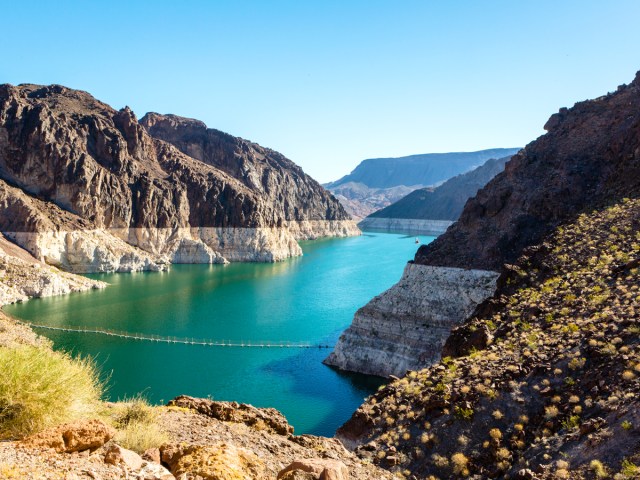
Capacity: 29 million acre-feet
Also on the Colorado River, and just 45 miles away from the Las Vegas Strip, is the largest reservoir by volume in the United States. Lake Mead was created after the construction of one of the world’s most well-known dams, the Hoover Dam. It’s a valuable source of water for the states of Arizona, California, and Nevada, in addition to areas of northern Mexico. When at full capacity, the reservoir’s surface rises to 1,220 feet.
Like many human-made reservoirs, Lake Mead doubles as a busy recreational zone. It’s part of the Lake Mead National Recreation Area, which boasts 1.5 million acres of jaw-dropping canyons, valleys, and mountains. Visitors can do everything from hiking amid diverse ecosystems and backcountry horseback-riding to kayaking in hidden coves and scuba-diving.
More from our network
Daily Passport is part of Inbox Studio, which publishes content that uplifts, informs, and inspires.

